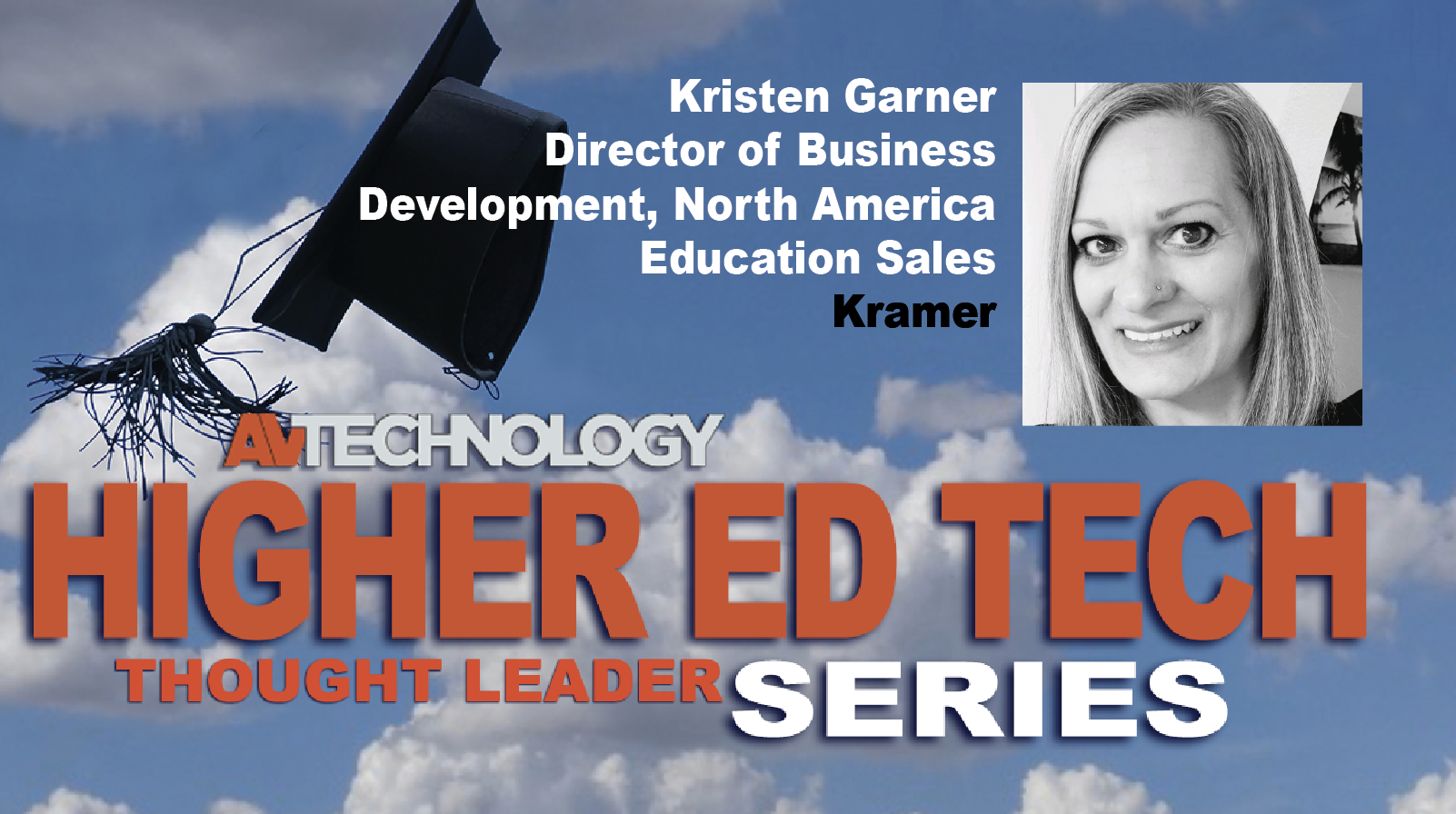
AVT Question: Please share insight and best practices for designing the higher ed classroom for today and the future.
Thought Leader: Kristen Garner, Director of Business Development, North America Education Sales at Kramer
Today’s most important trend is accessibility. Modern students need to be able to connect to learning experiences both in the classroom and remotely, during or after class. So, agile campuses must accommodate the streaming, broadcasting, and capturing of teaching sessions for students to autonomously access through multiple platforms.
Upskilling educators, standardizing user experiences, and providing prompt helpdesk services will minimize disruption and empower lecturers to harness the tech to its full potential." —Kristen Garner, Director of Business Development, North America Education Sales at Kramer
As a result, the classroom of the future must be an ultra-flexible space that offers both traditional lecture-style experiences and immersive audio-visual sessions that power sense-based learning opportunities. Augmented reality (AR) enables educators to craft more effective experiences for different learners, optimized to the needs and preferences of each individual.
Technologies like AR, artificial intelligence (AI), and the metaverse are already permeating some campus landscapes and lessons where they fit the curriculum or teaching style. As students will drive the speed of adoption, educators must investigate their values, needs, and expectations. If immersion has become a day-to-day part of their lives, such as via VR gaming headsets, it’s likely they’ll soon demand similar classroom experiences, too.
In the same way that some math exams now allow calculators, these new technologies may even fundamentally transform how students learn and apply their knowledge. Understanding concepts will be necessary—after all, math students still need to grasp mental arithmetic—but tech may help to streamline learning processes and reduce their mental toll. Instead, the focus may turn to learning how to best collaborate with tools like AI to achieve desired outcomes.
But as technology accelerates, we still need to ensure it’s practical enough for everyday teachers. Like the best inventions, new learning tools must seep into the background until we can’t remember life without them, rather than become an extravagant distraction. Upskilling educators, standardizing user experiences, and providing prompt helpdesk services will minimize disruption and empower lecturers to harness the tech to its full potential.







